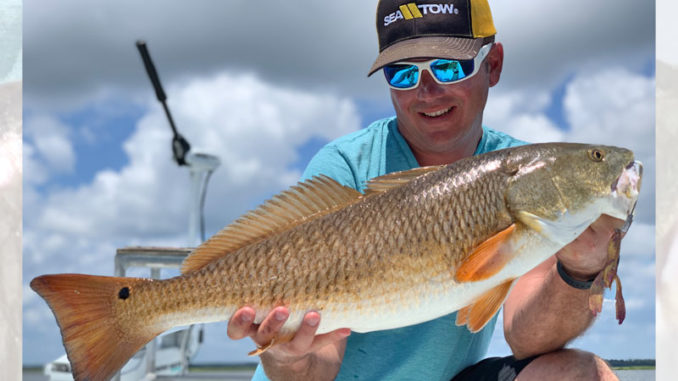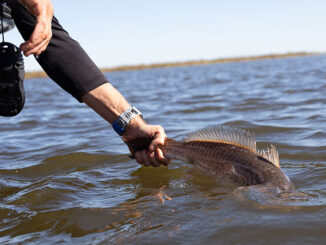
Let crab trap floats guide you to your fishing spot, guide says
When Chas Champagne, creator of the Matrix Shad soft-plastic lure, heads out in pursuit of fish, he often relies on a tried-and-true, real-time indicator of tidal movement near his favorite fishing locations.
But he doesn’t use his electronics or even consult online tidal prediction websites to do it.
So how does he pull it off?
He simply checks out a few crab traps on the way to his spot for the day.
Crab traps floats
“As soon as you launch, find crab trap floats set in tidal flows,” Champagne said. “Run your boat toward your spot next to the first few crab traps you see, and get a read from how the current is breaking off the float and rope.”
Now you’re armed with real-time tidal info including current strength and direction for the spot you had in mind — which might not actually be the best place to fish for the day.
“I can’t tell you how many times I have come out of the pass, making a beeline for the exact spot we killed them at the day before, and see the crab floats swinging in a different direction,” Champagne said. “I don’t care how many we caught the day before, if the tide is wrong for that spot, it’s wrong.
“I’ll hook the boat right there and head for the spot that the tide and wind are telling me that day.”
Keep notes
Champagne said it’s better to rely on the information you’re presented with out on the water to make an educated decision about where to target rather than where other anglers say they’ve been catching.
To help, he suggested keeping logs and notes of your fishing activity.
“If you caught fish in a spot on a light, falling tide at a water temp of 65 degrees, you can bet your bottom dollar they’ll be back there in that situation almost every time,” Champagne said. “But don’t scratch your head for too long after you catch 75 trout in a spot just 24 hours earlier, and then wonder where they went when you go back the next day and catch only three with a different tide direction or speed.
“Just keep in the back of mind that as soon as the tide returns to what it was when you were catching, the fish will probably be right back at it.”


